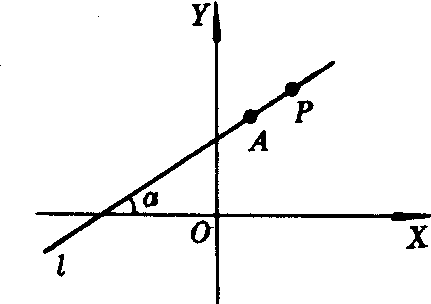直线的参数方程zhixian de canshu fangcheng
常见的直线的参数方程主要有以下三种:
❶过定点A (x0,y0)且倾角为a的直线的参数方程(如图)

 的数量,即t=AP.这种形式的直线的参数方程在实践中应用最广,常常能起到简化运算的作用.
的数量,即t=AP.这种形式的直线的参数方程在实践中应用最广,常常能起到简化运算的作用.
❷过定点A (x0,y0)且斜率k=b/a的直线的参数方程

❸过两定点P1 (x1,y1),P2 (x2,y2)的直线的参数方程

参数λ的几何意义是直线上任意一点P(x,y)分线段P1P2所成的比,即λ=P1P/PP2.严格地说,这种形式的直线的参数方程,漏掉了直线上一个点,就是P2点,应该补上这一点.
直线的参数方程zhixi an de canshu fangcheng
参见“空间直线方程的各种形式”。